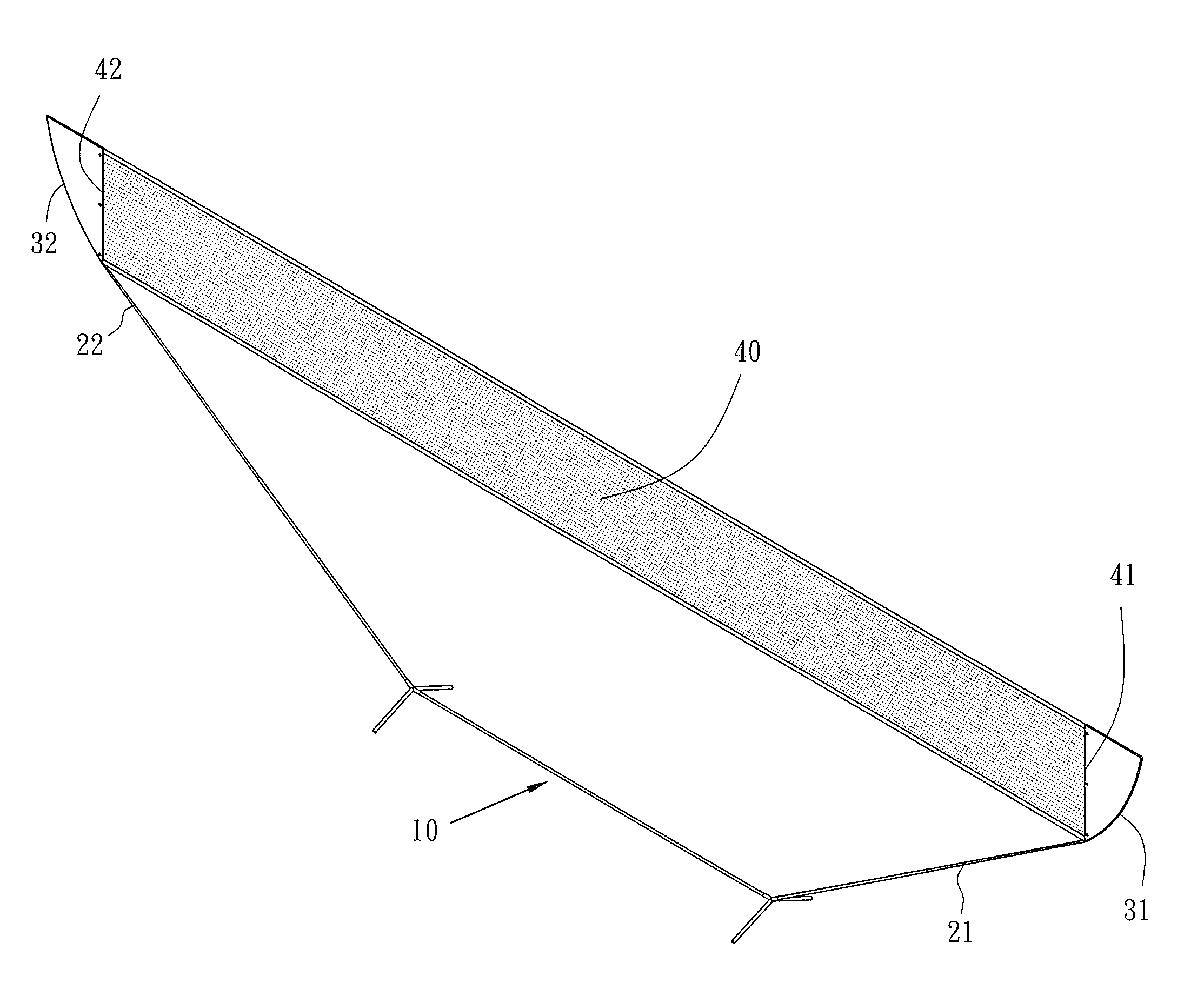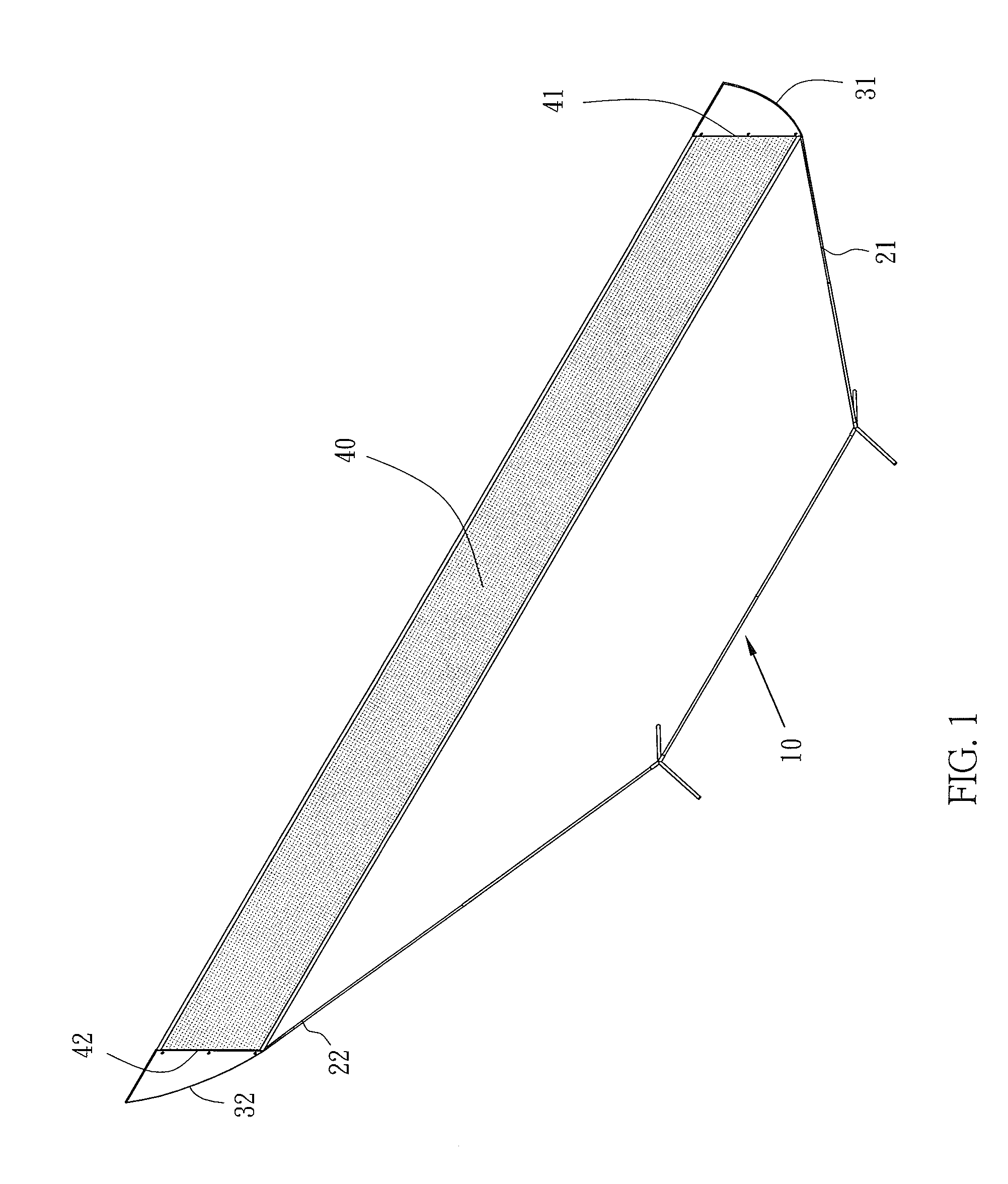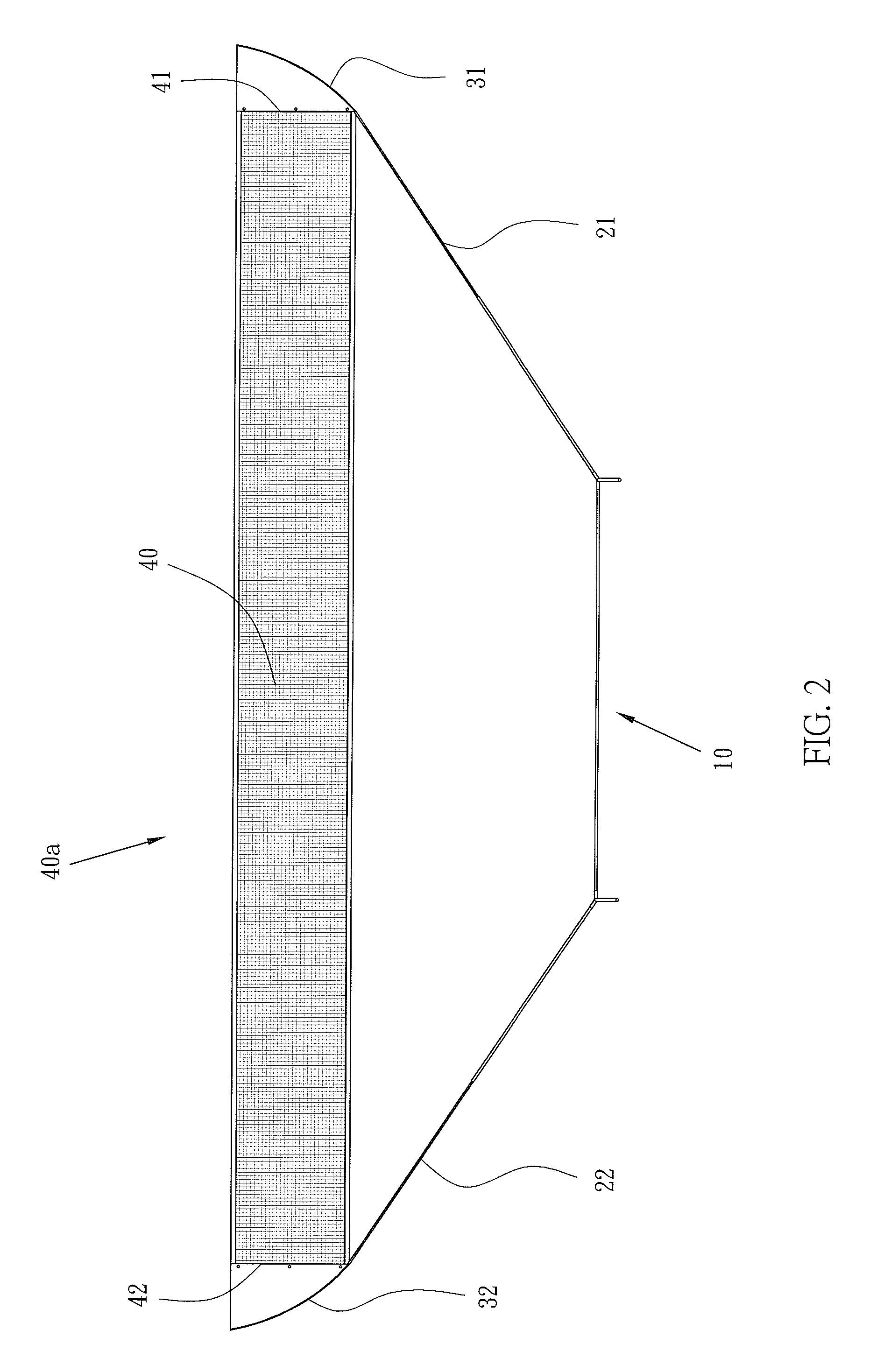Ball Net Structure
a technology for nets and balls, applied in tennis, racket sports, sport apparatus, etc., can solve the problems of inability to stretch and tighten the net, lack of elastic metal, and inability to function well, and achieve the effect of high rigidity
- Summary
- Abstract
- Description
- Claims
- Application Information
AI Technical Summary
Benefits of technology
Problems solved by technology
Method used
Image
Examples
Embodiment Construction
[0025]The present invention provides a ball net structure.
[0026]Referring to FIG. 1 through FIG. 3, the present invention provides a ball net structure which comprises a base 10, two tilted metallic pipes 21, 22, two resilient rods 31, 32, and a net body 40.
[0027]The base 10 is disposed on the ground.
[0028]The two tilted metallic pipes 21, 22 are insertedly disposed on two sides of the base 10 and titled outward.
[0029]The two resilient rods 31, 32 have insertion ends 311, 321, respectively. The insertion ends 311, 321 are inserted into the tilted metallic pipes 21, 22, respectively, and fixed in place. The tilted metallic pipes 21, 22 are longer than the resilient rods 31, 32 which are made from spherical fiber or carbon fiber, such that the resilient rods 31, 32 can bend in a manner to have optimal curvature and produce the evenest and largest tensile force.
[0030]In the embodiments of the present invention, the net body 40 comes in the form of a volleyball net body 40b, badminton n...
PUM
 Login to View More
Login to View More Abstract
Description
Claims
Application Information
 Login to View More
Login to View More - R&D
- Intellectual Property
- Life Sciences
- Materials
- Tech Scout
- Unparalleled Data Quality
- Higher Quality Content
- 60% Fewer Hallucinations
Browse by: Latest US Patents, China's latest patents, Technical Efficacy Thesaurus, Application Domain, Technology Topic, Popular Technical Reports.
© 2025 PatSnap. All rights reserved.Legal|Privacy policy|Modern Slavery Act Transparency Statement|Sitemap|About US| Contact US: help@patsnap.com



